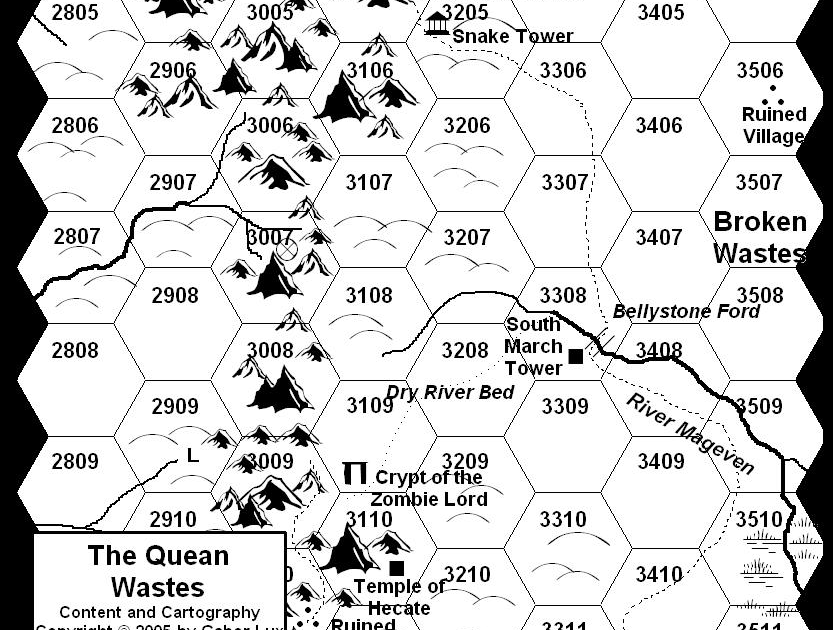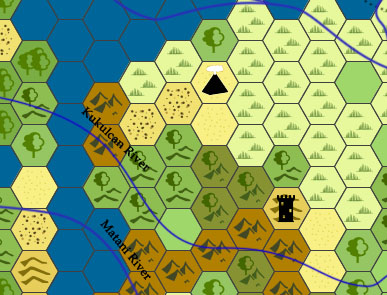squeen
8, 8, I forget what is for
Melan has tackled the Great Serpent in his blog!

 beyondfomalhaut.blogspot.com
beyondfomalhaut.blogspot.com
With a bit of help like this, I've started to understand what people mean by hex-crawls, but there is still something at the heart of it that rubs me the wrong way. I mean, in our campaign, the vast majority of play has been outdoors traveling from one location to another---mostly on roads, but also through some wilderness. All sorts of crazy stuff happens on the way: some random but most keyed. Lots of locations are only partially fleshed out until the PCs arrivial is immenent (like in the next game or 2 or 3).
Sounds kinda hex-y but what I dislike is:
It's a cool article and the best part of the article IMO was:

[BLOG] Hex-crawls: A Simple Guide
A slice of the Wilderlands Irony: no longer just a diet rich in ferrous metals. Old-school gaming is now officially old, having lasted way l...
With a bit of help like this, I've started to understand what people mean by hex-crawls, but there is still something at the heart of it that rubs me the wrong way. I mean, in our campaign, the vast majority of play has been outdoors traveling from one location to another---mostly on roads, but also through some wilderness. All sorts of crazy stuff happens on the way: some random but most keyed. Lots of locations are only partially fleshed out until the PCs arrivial is immenent (like in the next game or 2 or 3).
Sounds kinda hex-y but what I dislike is:
- discrete hex grid movement --- like a video game
- the horrible hex-coordinate system for marking keyed locations
- too much randomness (seems lazy)
It's a cool article and the best part of the article IMO was:
Melan has played and authored a lot. It's great he's been sharing what he's learned since rediscovering old-school A/D&D.Melan said:What about three-hex/seven-hex/hex-flower wildernesses?
Nah.
Last edited:
